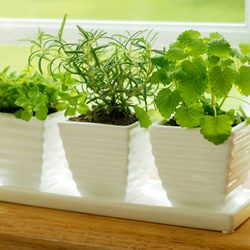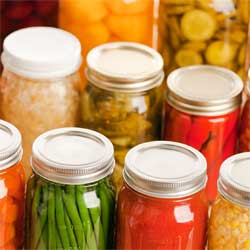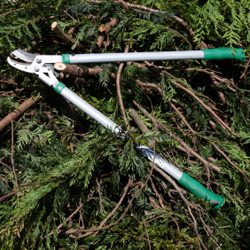Winter is upon us. Depending upon the temperatures, there may still be time to finish remaining chores. If you have any questions about the following procedures or products, please come in and see us. We can help you select the correct dormant oil, fertilizer, selective herbicide and frost protection method. We’re always here to help.
General Landscape
- Mulch with bark, compost or other local materials to enrich soil, protect plant roots and prevent erosion.
- Protect plants from frost and wind.
Houseplants
- Perk up tired houseplants by removing dead and dying leaves. Wash under a soft shower in the sink or tub.
- Spider mites proliferate in warm dry winter homes. Check for mites by looking for tiny speckles on leaves.
- Transplant if roots are growing through the drainage holes or over the pot edge. If you don’t want to move into a larger pot, untangle the roots and cut back by 1/3, scour the pots and replant with new soil.
- Remember to turn your plants each week as they begin to grow towards the weaker window light.
- For indoor bloom, plant amaryllis, paper white narcissus, hyacinth, crocus and indoor cyclamen.
- Popular holiday plants such as poinsettias, chrysanthemums and orchids fill the stores. Check them thoroughly for “hitchhikers” before bringing into the home or spray with household plant insecticide or soap.
- Be creative in your arrangements and combine them with metallic painted twigs, pinecones or seashells.
- If using a live tree for a “living Christmas tree”, prolong its time indoors by using Wilt-Pruf to reduce the loss of moisture from the needles.
Lawn:
- Remove leaves, toys, hoses, etc, from lawns to prevent dead spots.
- Apply winter fertilizer, if not already done. The middle number, phosphorus, aids root growth during the winter.
- If you have weeds in your lawn, consider using a winter fertilizer with weed control.
- Mow one time after lawn goes dormant and before freezing. This last mowing should be 2 ½” tall.
- When temps are freezing, stay off the lawn as much as possible to reduce blade breakage.
Vegetables:
- Protect cool season vegetables with row covers, leaf or mulch cover.
- Mulch beds to enrich and protect from rain/snow erosion.
- Review gardening notes and plan next year’s garden.
- Test germination rate of leftover seeds, if wanting to use again.
- If gardening under lights or in heated greenhouse, start seeds of early spring crops: lettuce, kale, mustard, spinach, and other greens.
- Harvest carrots, lettuce, greens and over-wintering crops.
Trees and Shrubs
- Stake young trees and vines if needed. In case of a heavy freeze, use Wilt-Pruf or similar product to reduce transpiration of moisture.
- Prevent southeast trunk injury, a form of winter freeze damage. Use light-colored tree guards to protect the trunks of young trees for at least two years after planting. After two years, paint the trunks with white latex paint. These two methods prevent the tree trunk from splitting when sunlight warms the bark on side of the trunk.
- Fertilize shrubs and trees, if not done already, and the ground is not frozen. This allows roots to absorb when temperatures are above 40° and when spring returns. Granules and spikes provide nutrients effectively and easily.
- Prune out dead and diseased tree branches to prevent from falling on roof or pedestrians.










